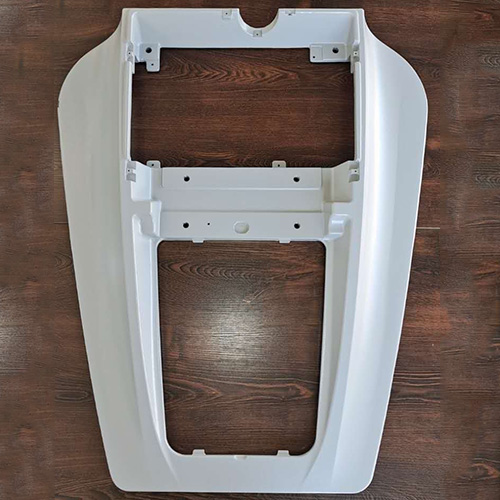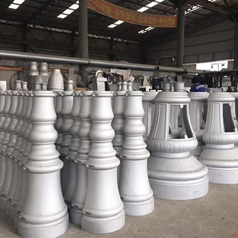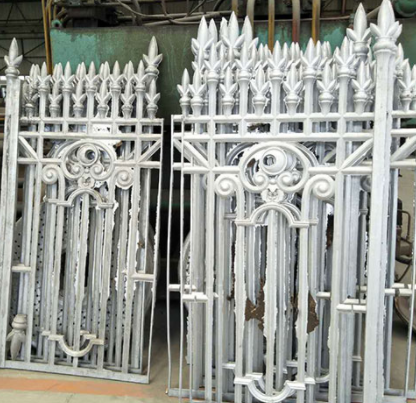History Of Iron Casting
Have you ever thought about the history of iron casting? When did the ancients begin to dream of making objects out of molten metal? Even the best historians, archaeologists, and scientists may never really know. But maybe that's why history is so fascinating.
Some historians believe that cast iron dates back as far as 6000 BC in ancient China, while others believe that only copper and bronze castings were produced at this time. However, the evidence provided by archaeologists contradicts both views. One of the earliest examples of castings found by archaeologists in what was then called Mesopotamia was the copper frog dating back to 3200 BC. Although iron and other metals had been discovered, it was not until centuries later that they were melted down and poured into molds, such as a casting.
Archaeologists believe that iron was discovered by the Hittites in ancient Egypt between 5000 and 3000 BC. During this time, they used hammers or heavy hammers to make metal into tools and weapons. They found and extracted minerals from meteorites and used them to make spearheads, tools, and other trinkets. Between 2000 and 1200 BC, the Hittites developed a process for smelting iron - heating the ore for refinement - to increase its availability. For centuries, the production of iron was the secret of the Hittites, and it was not until about 1000 BC that Chinese metallurgists discovered the superiority and workability of iron.
The earliest examples of cast iron in ancient China are the four statues outside Zhong Yue Temple in Dengfeng. These statues were cast around 1024 BC. Prior to this, Chinese metallurgists worked with bronze and copper to make castings, which were mainly used in the country's agriculture. The iron plow underwent a revolutionary change when it was invented. This makes it easier for farmers to dig their fields.
One of China's greatest influences on the development of cast iron occurred in 645 BC when Chinese metallurgists began using sand molding. In the process, the sand becomes tightly wrapped around the object, forming mold. The molten metal is then poured into a mold to form a metal casting. The advantage of this method is that it is easy to mold various shapes and sizes. The drawbacks are the inevitable drawbacks and the fact that the process is rather laborious. This is the earliest known use of the process and represents China's significant contribution to the history of cast iron.
Another Chinese innovation is the blast furnace. It is used in the smelting of industrial metals, usually pig iron, which is low quality, brittle, high carbon iron. It must be refined before it can be used to make steel. The term blast refers to the process of supplying fuel from the top by blowing hot burning air into the lower part of the furnace through pipes called tuyere.
The oldest blast furnace found by archaeologists dates back to the Han Dynasty of China in the first century BC. The use of the blast furnace did not spread to Europe until the 100s. Sweden was the first country to use the blast furnace, followed by France and Belgium in the 1300s, and The United Kingdom in 1491.
In addition, cast iron was introduced to Europe in the 1400s. The earliest evidence of casting products in Europe is the cast iron pipes used to carry water at Dillenberg Castle in Germany. It was cast in 1455 and after that, in Burgundy, France, and England, cast-iron also used 16 centuries of cannons made during the reform process.
In 1619, the Virginia Company of London established its first ironworks in North America. It's called Falling Creek Ironworks, and it's located near the James River. The colonists chose the site not only because of its proximity to mineral deposits but also because it provided a convenient source of water for electricity and transport-related needs. The remaining written records show that the facility was able to produce some iron. But historians believe that full production could not be achieved.
In 1642, Saugus Iron and Steel Plant, the first iron foundry in the United States, was opened near Lynn, Massachusetts. It was also where America's first cast-iron Saugus POTS were made. Saugus Steel Plant is now a national historic site because it was a landmark in manufacturing and the American Industrial Revolution.
Between 1700 and 1750, Britain was heavily dependent on imports of cast iron from Sweden because it could not rapidly expand its production capacity to meet the growing demand for cast iron. This was before the British industrial revolution. At the time, the steel industry consisted of small localized production facilities that had to be located close to their required resources, such as water, limestone, and charcoal. This is because there are limited resources to transport raw materials and manufactured goods.
At this point, the furnaces are small, which means their production capacity is very limited. Although the UK has rich iron ore reserves, the iron it can produce is low-quality, brittle pig iron, which has a lot of impurities, caused by charcoal-burning blast furnaces.
As a result, the availability of cast iron is very limited. Most of the demand is for wrought iron, which is cast iron after its impurities have been hammered. But it took a long time, and imported wrought iron was cheap. As a result, English iron was used only for cheap items such as nails. But iron would soon become the cornerstone of the industrialization of the British economy, and by 1800 it would be a major export.
The great influence of steel on Britain can be attributed to a series of innovations introduced in the 1700s. The first took place in 1709 when Abraham Darby became the first man to make iron from coke in a coke oven instead of charcoal. Coke is a solid fuel produced by heating coal without air and was a key element in the history of cast iron.
Coke is much cheaper and more efficient than charcoal. With the introduction of coke, it became possible and profitable to use larger furnaces, enabling mass production. Charcoal is too weak to support large amounts of iron, but coke is much stronger. While the challenge of brittle iron has yet to be solved, Darby's innovations have had a major impact on the industry and inspired many other advances.
The next innovation in the history of cast iron was the steam engine. It was invented in 1712 by A British man, Thomas Newcomen. At this time, steam engines were mainly used to pump water out of coal mines. Coal is a key part of the cast iron process, and therefore the invention is indispensable to the industry and industrialization of England.
Between 1770 and 1790 A Scottish inventor, James Watt, improved Thomas Newcomen's work by enabling steam engines to power machinery, locomotives, and ships. This further increases the speed and capacity of the industry to transport raw materials and manufactured goods.
James Watt's breakthrough came when he realized that the design of a steam engine wasted a lot of energy because it repeatedly cooled and reheated the cylinders. Watt introduced a design improvement, the independent condenser, which avoids this waste of energy and radically improves the power, efficiency, and cost-effectiveness of the steam engine.
In the end, Watt changed his engine and revolutionized the transportation industry, which has become a major constraint on steel manufacturing. Eventually, material transportation became more efficient and economical than ever before.
In 1783, Henry Cort developed two methods for extracting impurities from iron, converting it from pig iron to wrought iron, and allowing for the mass production of non-brittle iron.
Pig iron is a term used to describe coarse and brittle iron that comes directly from the blast furnace. In 1783, Cort patented the furrowed roller, which allowed iron bars to be made more quickly by a more economical method, a technique he called rolling. Previous methods used included hammering or cutting the rolled strip.
In 1784, Cort patented a hydration process that involved stirring molten pig iron in a furnace bed, in which fire and hot gases whirl over the metal to provide heat. This prevents the metal from coming into contact with the fuel. Circulating gases can remove carbon from iron.
As the iron is decarburized through the air, it becomes thicker, removing the "mashed" iron pellets from the more liquid impurities that remain in the furnace. Like the wrought iron, the molten iron is stronger and more malleable than pig iron and can be hammered and finished with a slotted roller invented by Cort. The drum helps to extrude impurities. In addition, by making iron into bars, the metal becomes easier to use as a finished product.
Cort's contribution to the industry allowed cast iron products to be produced on a large scale because removing impurities from pig iron did not require much time or labor.

Between 1793 and 1815, due to increased military demand, Britain's iron production quadrupled. The size of the blast furnaces has increased and the UK finally has the production capacity to meet demand.
However, in 1815, the War of 1812 ended and peace entered. With the end of the war, the price and demand for iron fell. But Britain has become the largest ironmaking plant in all of Europe. In addition, innovations in cast iron technology revolutionized its economy and way of life.
 How To Solve The Burr Of Aluminum Castings
Jul. 29, 2024
How To Solve The Burr Of Aluminum Castings
Jul. 29, 2024
 Aluminum Casting 4 Kinds Of The Surface Treatment Pr...
Jul. 09, 2024
Aluminum Casting 4 Kinds Of The Surface Treatment Pr...
Jul. 09, 2024
Copyright © Dalian Lianjiang Metal Co., Ltd. All Rights Reserved | Sitemap
Recommend Products: Aluminum Mailbox With Post
